Detailed evidence of the impact of the Private Finance Initiative and Public Private Partnerships
Private Finance Initiative and Public Private Partnerships
Published on 26th April 2005. Last updated 29th May 2017.
-
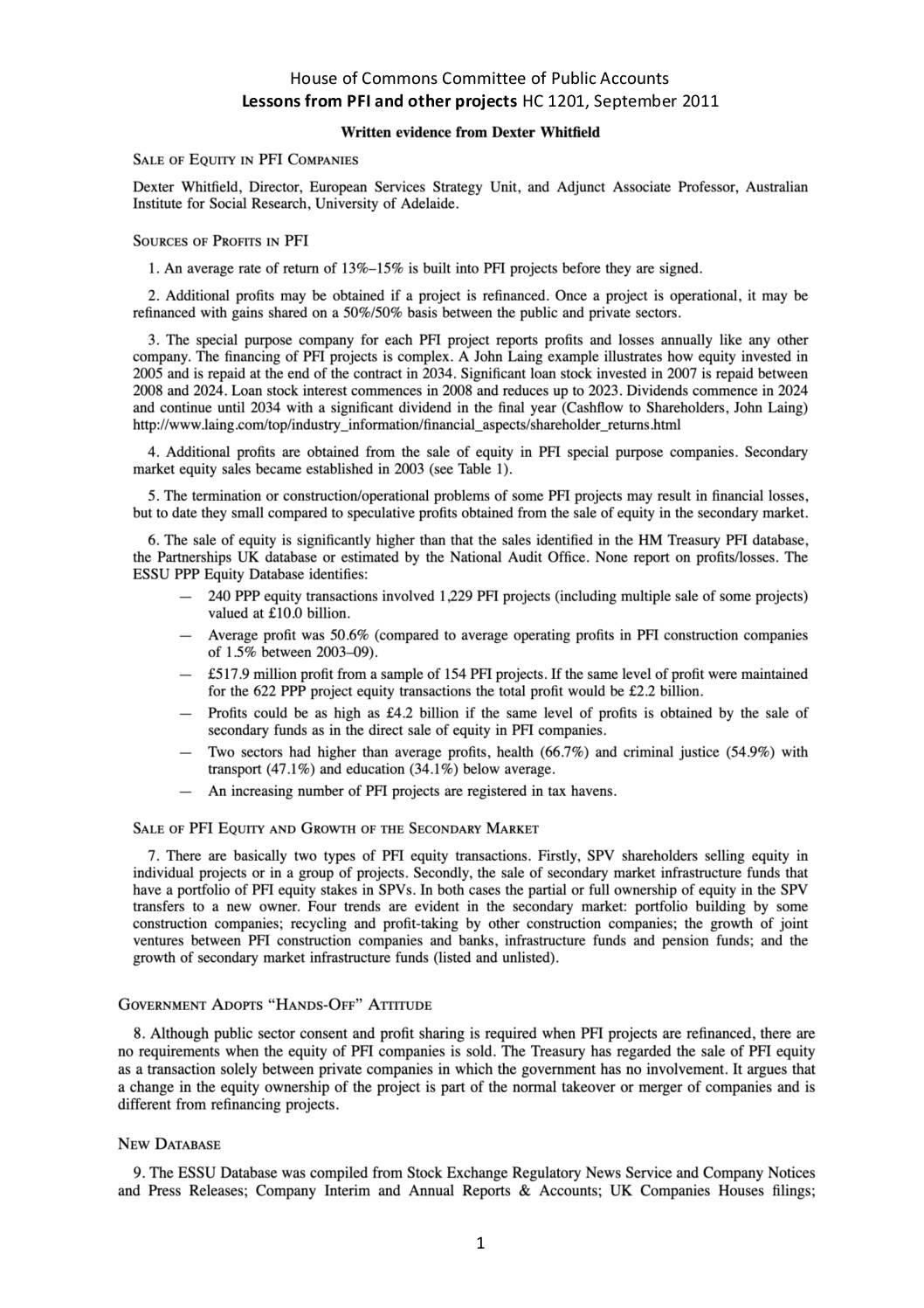
Evidence submitted to Parliamentary Investigations into PFI/PPP contracts and Privatisation
Sale of Equity in PFI companies, Written evidence to House of Commons Committee of Public Accounts, June 2011 House of Commons Committee of Public AccountsLessons from PFI and other projectsReport, together with formal minutes, oral and written evidenceHC 1201 – 1 September 2011 chrome-extension://efaidnbmnnnibpcajpcglclefindmkaj/viewer.html?pdfurl=https%3A%2F%2Fpublications.parliament.uk%2Fpa%2Fcm201012%2Fcmselect%2Fcmpubacc%2F1201%2F1201.pdf&clen=1068056&chunk=true The Committee conclusions and recommendations included: “The Treasury was unable to…
-

Financing the Infrastructure in the 21st Century: The Long Term Impact of Public Private Partnerships in Britain and Australia by Dexter Whitfield
A detailed study of the longer-term impact of changes in the design, structure and financing of PPP/PFI projects, external economic and political drivers such as growth of the secondary market and government modernisation policies, and the effect of economic, social and employment change. The report also examines PPP/PFI performance, democratic accountability and transparency, the impact…
-
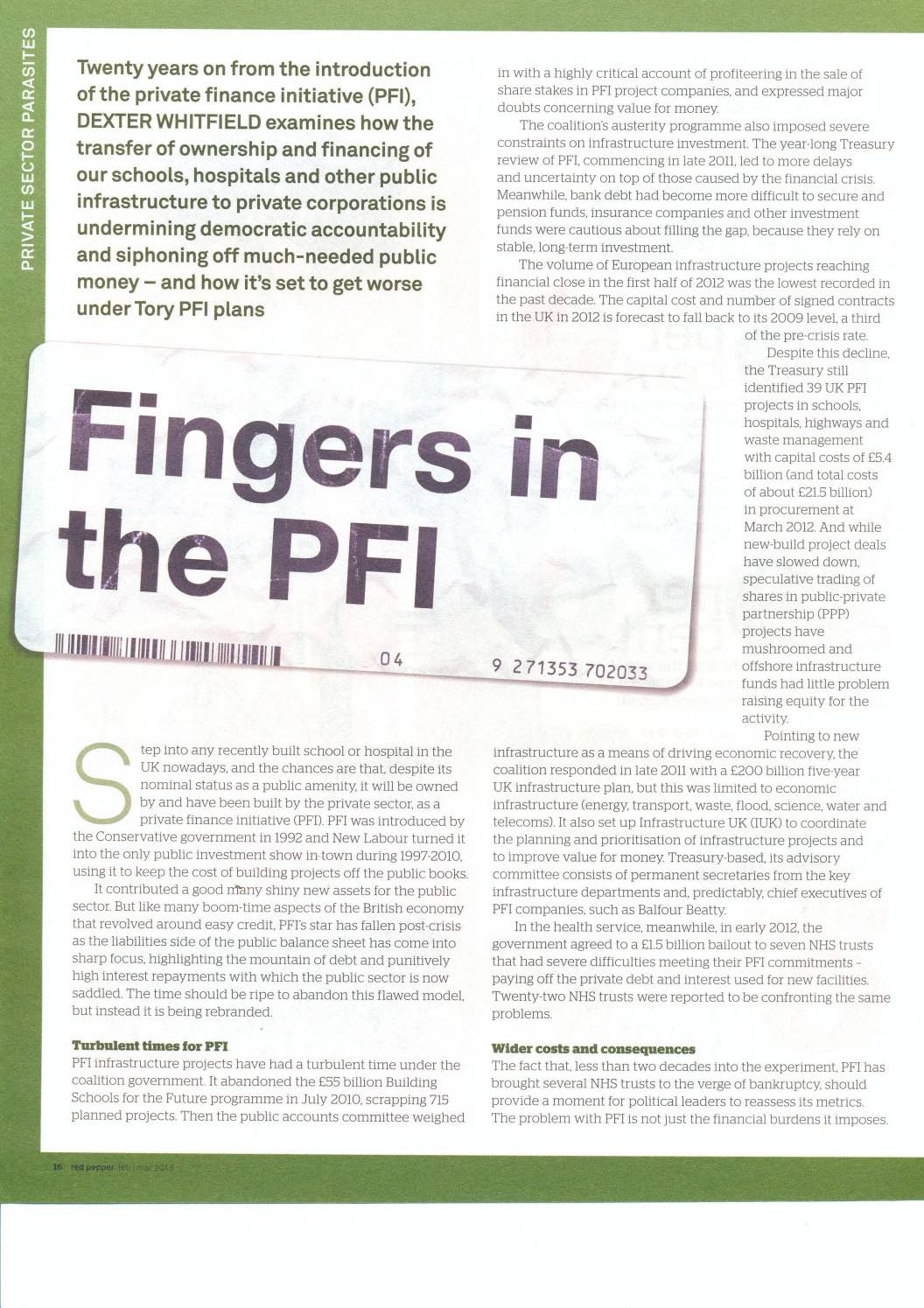
Fingers in the PFI
Twenty years on from the introduction of the private finance initiative (PFI), Dexter Whitfield examines the effect it has had – and how it’s set to get worse under new Tory plans (PF2) – Red Pepper, Feb/Mar 2013, Issue 188, pages 16 – 18. http://www.redpepper.org.uk/fingers-in-the-pfi/
-

The Private Finance Initiative: nationalise the Special Purpose Vehicles and end profiteering from public assets
This is a radical proposal by the People vs Barts PFI campaign which has been researching and discussing ‘what to do about PFI’ for several years. The paper explains what SPVs are, how SPVs spin off private profit from public assets and proposes a mechanism for nationalising the SPVs. Proposals to strengthen the public design,…
-

PPP Wealth Machine: UK and Global trends in trading project ownership: ESSU Research Report No 6
The average annual return on the sale of equity in UK PPP project companies was 29% between 1998-2012 – twice the 12%-15% rate of return in PPP business cases at financial close of projects. The excess profit could be £2.65bn, all of which benefits private sector companies. This report exposes the real level of profiteering…
-

Global Auction of Public Assets: Public sector alternatives to the infrastructure market & Public Private Partnerships by Dexter Whitfield
A new study exposes the impact of the emerging global infrastructure market and widening use of Public Private Partnerships, which is fuelling a new era of public asset sales. Yet over US$500bn of PPP projects have failed, most have little democratic control or transparency. They are costly, poor value and lack innovation. Ultimately, they are…
-
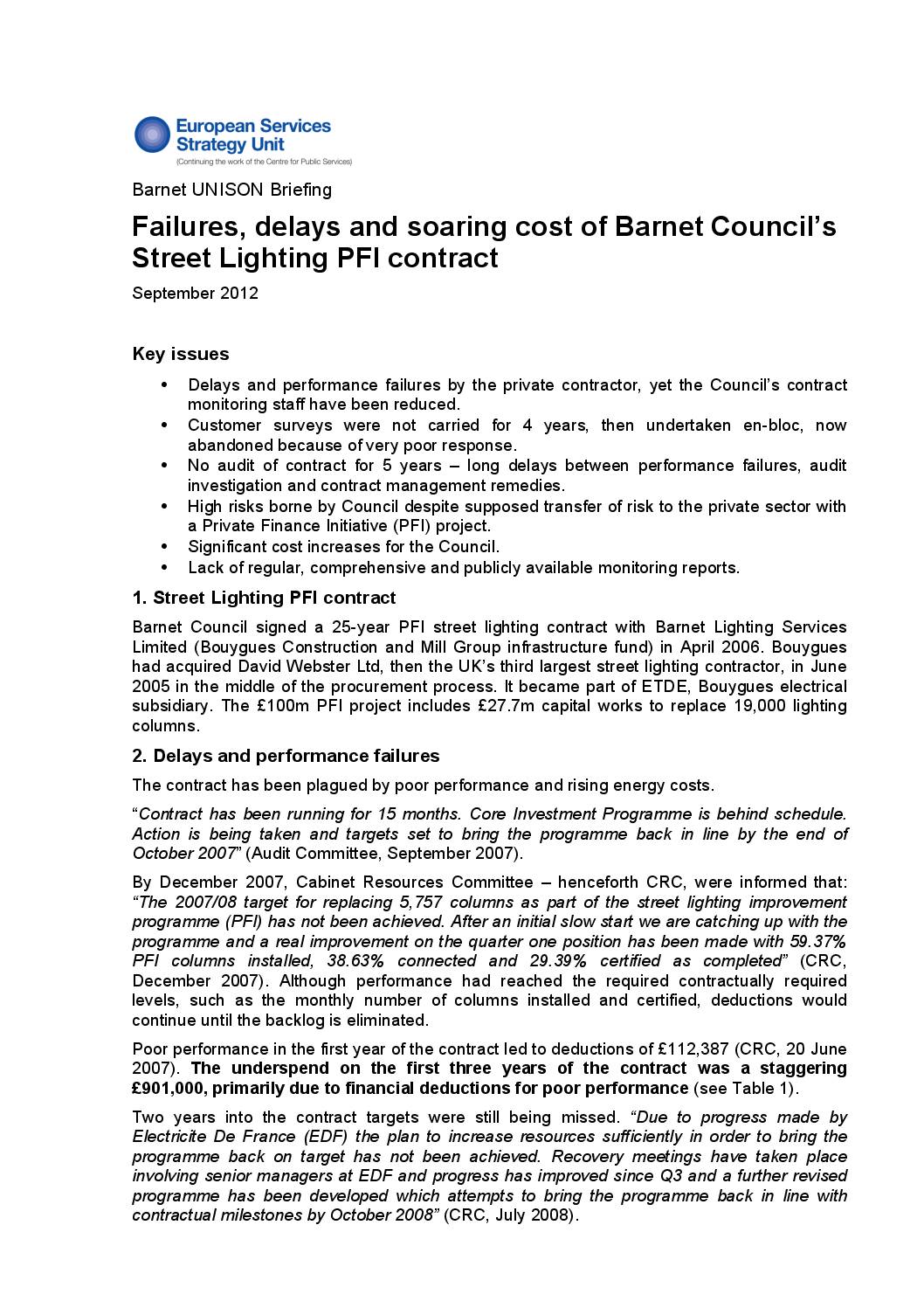
Failures, delays and soaring cost of Barnet Council’s Street Lighting PFI contract
The London Borough of Barnet signed a £100m 25-year PFI street lighting contract with Barnet Lighting Services Limited (Bouygues Construction and Mill Group infrastructure fund) in April 2006. This Briefing details the delays and performance failures by the private contractor, the lack of audit despite the high risks and cost increases borne by the Council,…
-

Newcastle Street Lighting PFI Project
The report questions the basis on which community benefits have been calculated, in particular the reduction in road accidents and crime reduction. It concludes that value for money is not proven because the Private Finance Initiative (PFI) option has been manipulated by the inclusion of over £16m of efficiency savings, PFI savings and risk costs…
-
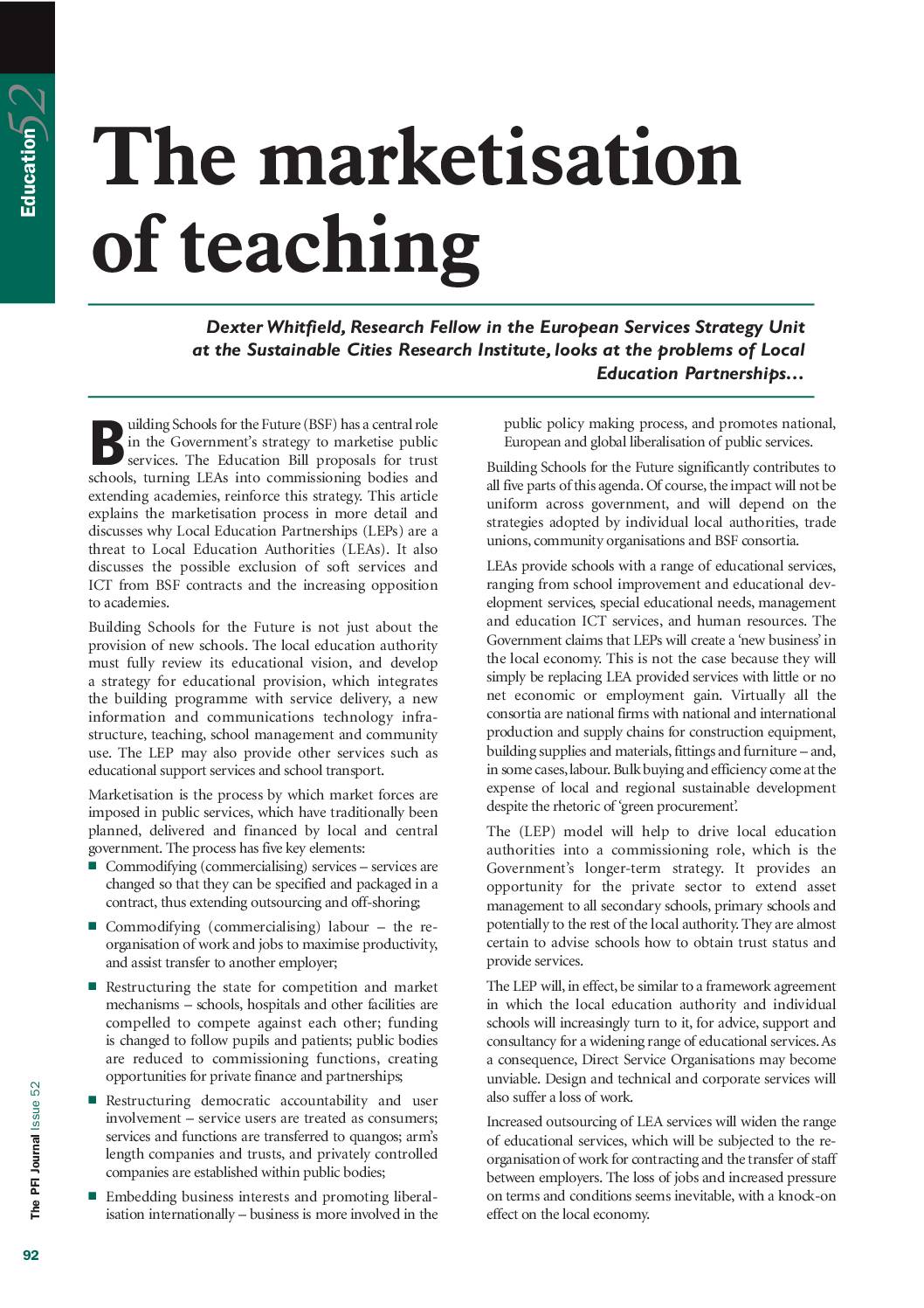
The Marketisation of Teaching
The April 2006 issue of the *PFI Journal* contains an article by Dexter Whitfield which examines the potential impact of the Building Schools for the Future programme on education.
-
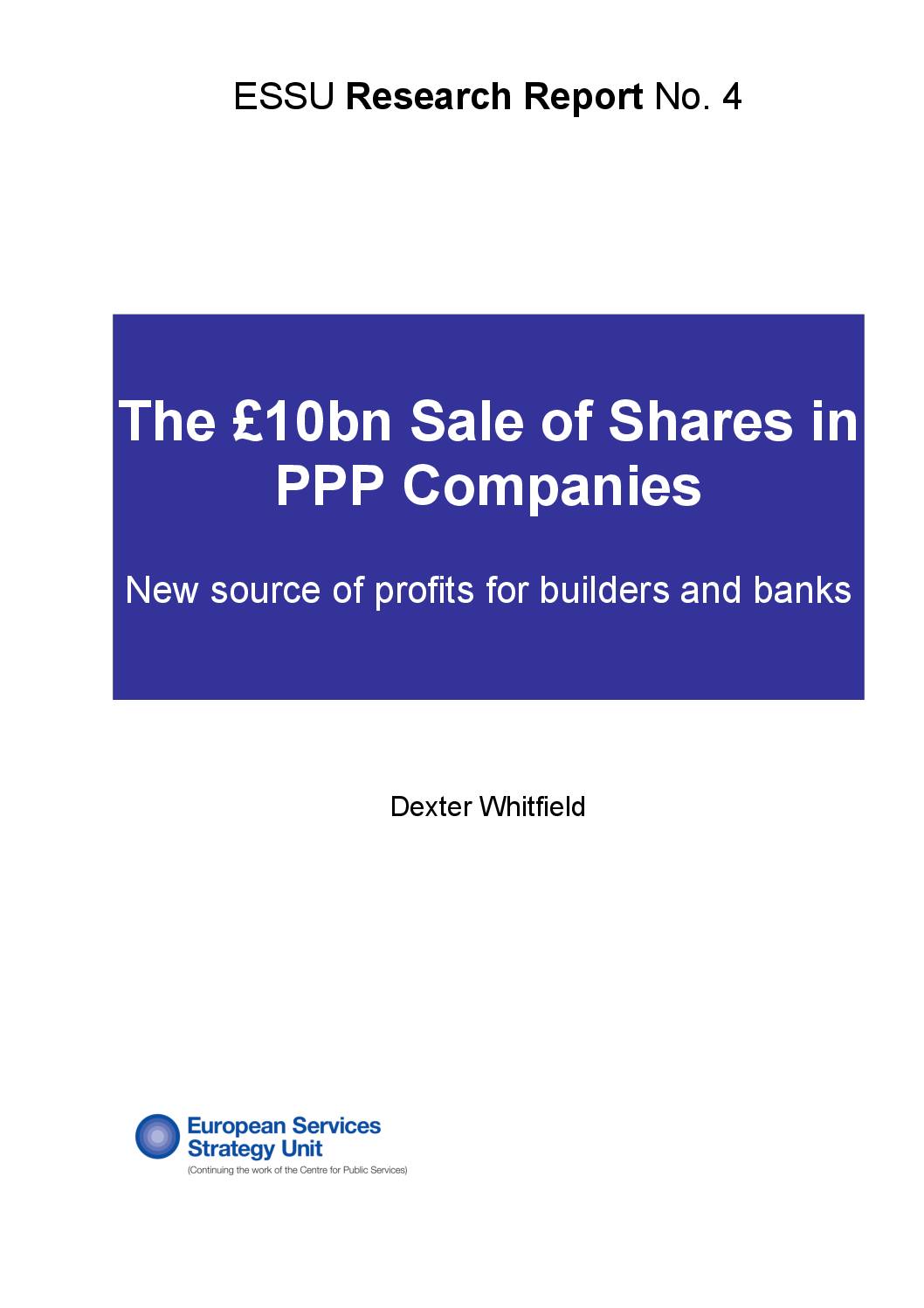
The £10bn Sale of Shares in PPP Companies: New source of profits for builders and banks, Dexter Whitfield
A new ESSU Research Report reveals 240 PPP equity transactions involved 1,229 PPP projects (including multiple sales) valued at £10.0bn in the last decade. Average profit was 50.6% in individual and group equity transactions (compared to average operating profits in construction companies of 1.5% between 2003-09). £517.9m profit from a sample of 154 PPP projects.…

